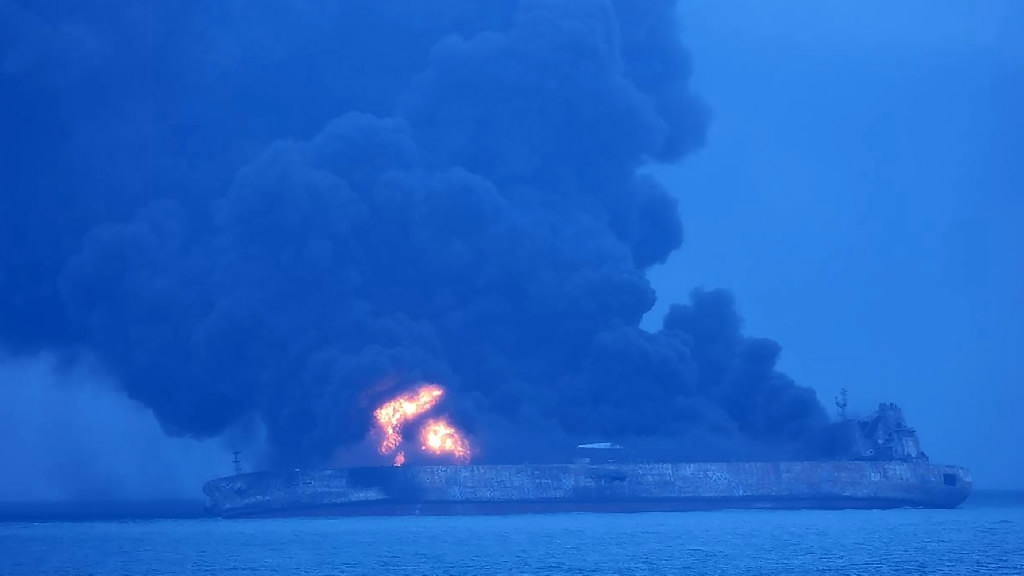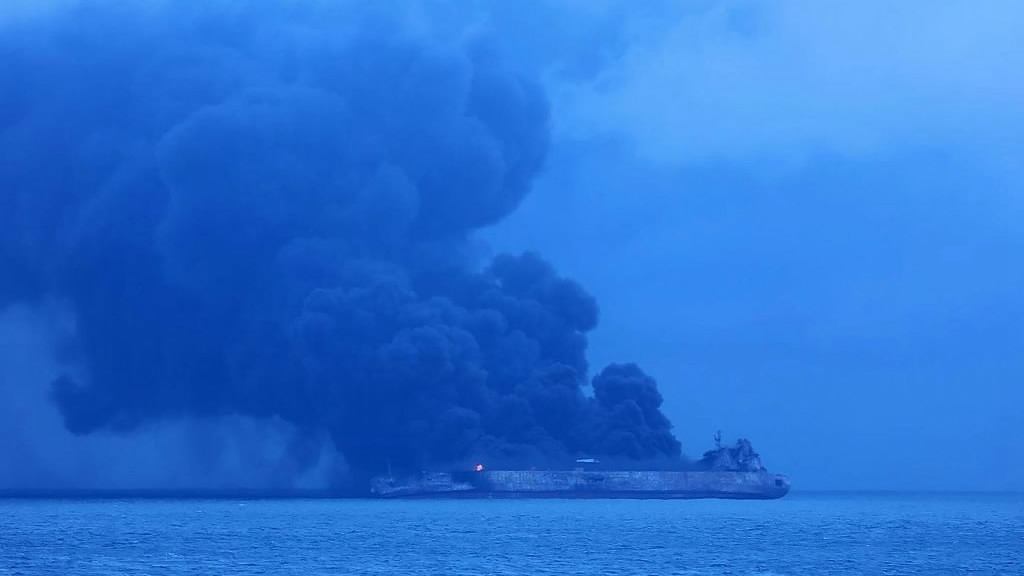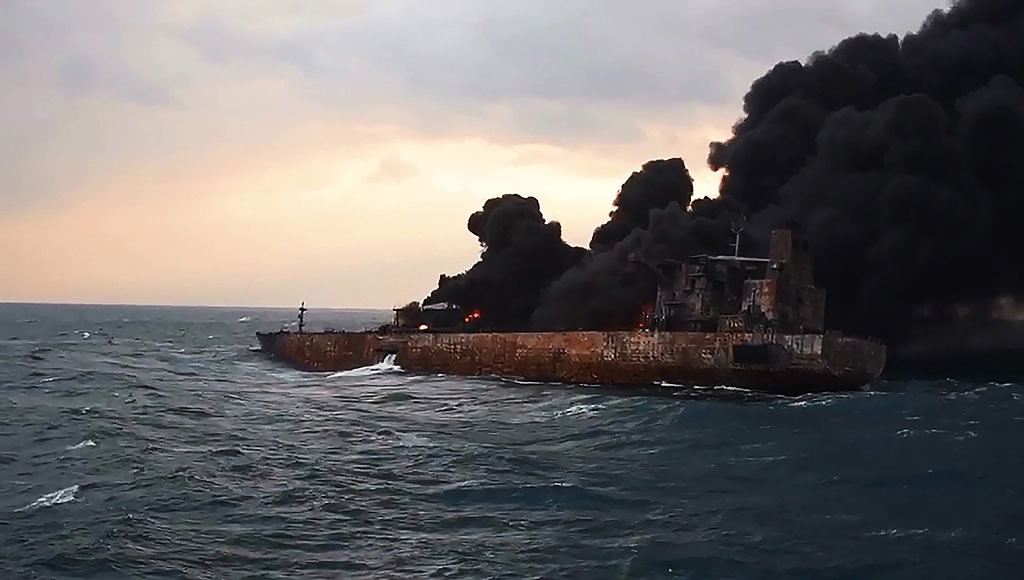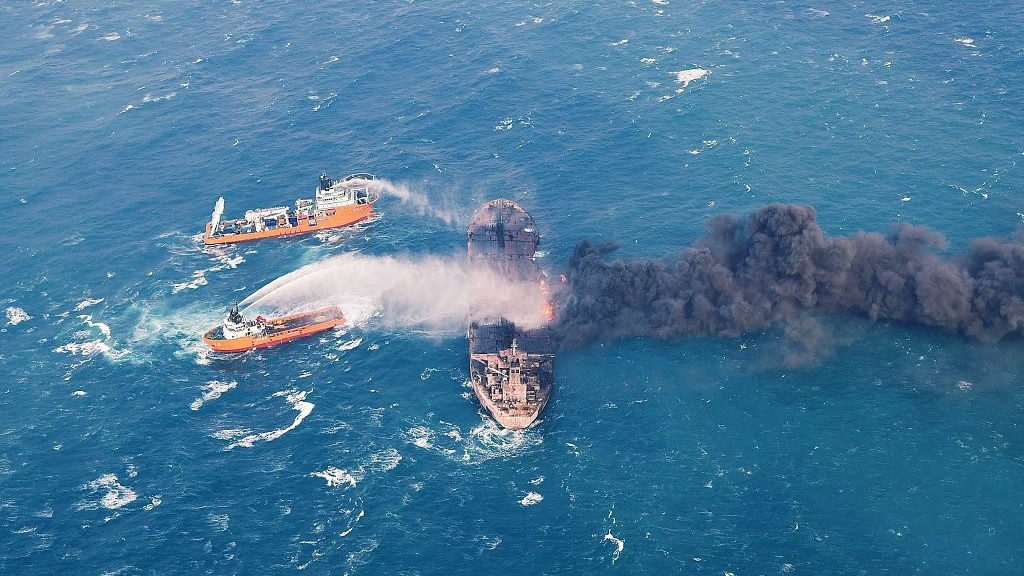
Opinions
17:25, 15-Jan-2018
Expert: Sanchi damage recovery may take decades with multi-measures' work
CGTN

The flames on the wreckage of Sanchi off the coast of Shanghai extinguished on Monday and cleaning has begun.
The Panama-registered oil tanker, hit by another partial explosion, sank on Sunday about 151 nautical miles southeast of where the collision occurred.
Sanchi collided with CF Crystal, a Hong Kong-registered bulk freighter, about 160 nautical miles east of the Yangtze River estuary in Shanghai on January 6.
Fu Pengcheng, a professor from the College of Life Science and Biotechnology at Beijing University of Chemical Technology, warned that damage control from oil leaks may take decades.

Prof. Fu noted that that stopping the leakage will be tough. Unlike the USS Arizona sunken remains sitting at the bottom of the sea with its oil inside the ship 70 years ago, Sanchi released condensate oil which would cause impact to regional ecosystem.
Therefore, he said the cleaning work "must prevent large quantity of oil from leaking" as it posed threats to marine life.

Asked about the influences to the nearby fisheries and regional air and sea, Prof. Fu said condensate oil leak could harm fisheries and impact regional sea environment.
He said the most crucial matter was "to send a team of experts to evaluate the situation and try to make some appropriate plan to minimize the damage to the ecosystem."
Based on the professor's experience, the damage recovery to the contaminated area may take decades, even century.

As for the issues of floating oil, Prof. Fu noted "some of the condensate oil would go down to the sea bottom," while some would still drift on the sea surface flowing with wind and ocean current and at eventually will go near the coastline and the beaches. That's the time when the experts should find a way to collect the oil and conduct a remediation.
Finally, Fu said minimizing the damage requires a combination of physical, chemical and biological approaches which would take a long period.
He also cautioned the use of chemical dispersant that could lead to a secondary pollution due to its side effect. He suggested a bio-remediation -- to use bacteria which can degrade the toxins then convert it to unharmful materials.

SITEMAP
Copyright © 2018 CGTN. Beijing ICP prepared NO.16065310-3
Copyright © 2018 CGTN. Beijing ICP prepared NO.16065310-3